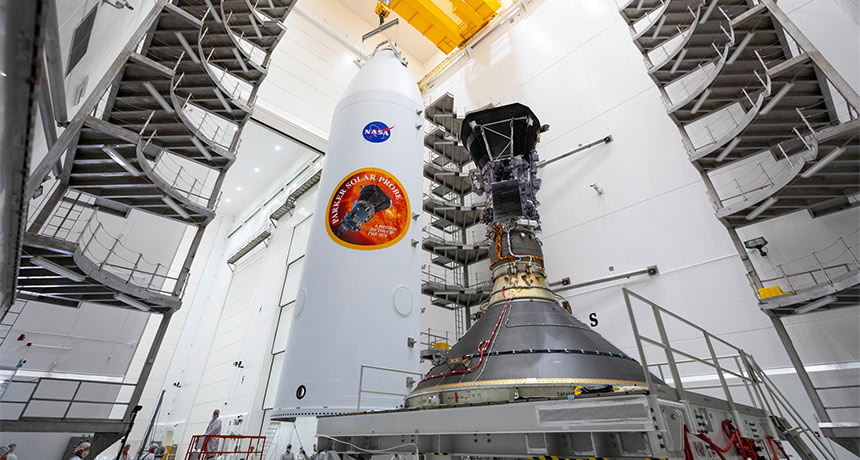With launch looming, the Parker Solar Probe is ready for its star turn
The launch window will remain open from August 11 to August 23

RARING TO GO The Parker Solar Probe is shown here on July 16, 2018, mounted atop the final rocket stage that will take it to the sun and next to part of the casing that will protect it during launch. The probe is set to launch from Cape Canaveral on August 11.
Ed Whitman/JHU-APL/NASA







